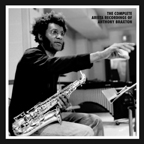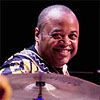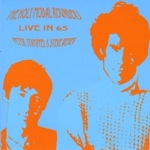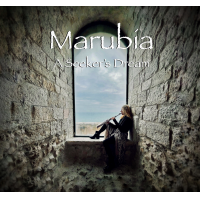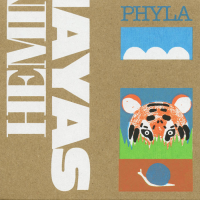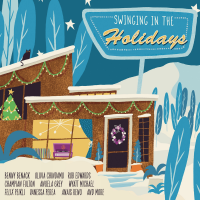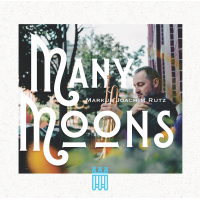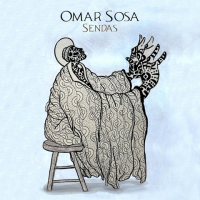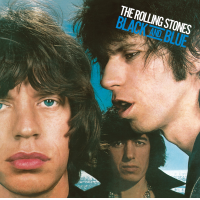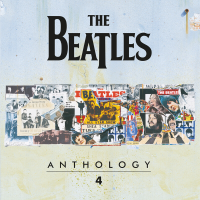Home » Jazz Articles » Extended Analysis » Anthony Braxton: Anthony Braxton: The Complete Arista Recordings
Anthony Braxton: Anthony Braxton: The Complete Arista Recordings
 Anthony Braxton
Anthony BraxtonThe Complete Arista Recordings
Mosaic
2008
Few artists in the realm of improvised music can claim as important or varied a series of recordings as reedman-composer Anthony Braxton did during his contract to Arista Records in the 1970s. With the financial backing provided by what was then an upstart division of Columbia, Braxton was able to embark on a series of nine records ranging from solo to small group to a mass of four orchestras (in a nod to Karlheinz Stockhausen's Gruppen) before his contract expired in 1980. As Mike Heffley discusses in his liner notes to The Complete Arista Recordings, an eight-disc set and the first serious effort to reissue this music on CD, the major label machine (also including Atlantic and Impulse!) was vying for Braxton at the time.
In the American record industry, avant-garde music had always been something of a hard sell, especially in the years after saxophonist John Coltrane's death. Braxton opened the door for a brief foray by major labels into the world of creative improvisation in the 1970s. Labels like Arista (and sub-labels Arista-Novus and Arista-Freedom), Columbia and Impulse! counted such musicians as pianist Muhal Richard Abrams and saxophonists Oliver Lake, Arthur Blythe, Dewey Redman, Sam Rivers, Pharoah Sanders and Marion Brown in their rosters.
Clearly, producers Steve Backer and Michael Cuscuna saw the validity of Braxton's music and his place in the jazz canon, a player and composer who was firmly in the tradition while simultaneously hurtling that tradition forward on an enormously individualistic structural path, one which at times aligned him with the celestial concepts of Sun Ra and Stockhausen. Indeed, Braxton's titles were based on esoteric diagrams from the language of metaphysics (he has since employed opus numbers). Braxton's run of sessions with Arista was also extraordinarily ambitious, including projects like a single composition spanning three LPs, with four 39-piece orchestras participating (Four Orchestras, 1978). They have nothing to do with commercial viability and everything to do with artistic vision.
Guitarist Joe Morris, who recorded a four-disc set of duet improvisations with Braxton in 2007 for Clean Feed Records, characterizes him as someone whose process relies on continual restatement. Whether repeating and abstracting a saxophone phrase ad infinitum or assembling a sprawling work over multiple discs (as he's wont to do), this sort of emphasis serves to drive home the internal logic of his work. A repeated idea remains in the foreground, no matter how brimming with substrata it might be—through familiarity, one adjusts to logical cadence. Braxton's language in both music and speech is comparable in many ways, often brimming with words, phrases and notes that fill space (as much as spaciousness is important). Counterintuitively, perhaps, that fullness has a way of opening things up, creating a space for elaboration and expansion through constant cyclical repetition.
Yet that rigor is not without a sense of humor (see Op. 58, the martial suite on Creative Orchestra Music 1976) or tradition; the Arista recordings include a few standards like "Maple Leaf Rag," "Red Top," "You Stepped Out of a Dream" and others. His world includes pianists/auteurs Duke Ellington, Thelonious Monk and Lennie Tristano, and he has long had an avowed interest in "cool" saxophonists like Paul Desmond, Lee Konitz and Warne Marsh (even if someone like Konitz didn't hear the influence). In fact, on the LP Donna Lee (America, 1972), with pianist Michael Smith, drummer Oliver Johnson and bassist Peter Warren), the second of two very "free" versions of "You Go To My Head" is dedicated to Konitz. For an artist as misunderstood in the mainstream jazz press as Anthony Braxton, the Arista recordings certainly make a case for the accessibility and broad appeal that his work deserves.
Small Groups
Tellingly, much of the music represented here is drawn from the small group that Braxton convened in the years following the dissolution of Circle, the 1970-1971 cooperative which joined him with pianist Chick Corea, bassist David Holland and drummer Barry Altschul. Braxton's new quartet joined the Circle rhythm section, minus Corea, with Canadian expatriate Kenny Wheeler, a trumpeter who had spent the previous decade-plus in England recording with a who's who of British improvisers (John Surman, Tony Oxley, Alan Skidmore, John Stevens, et al.). He was later replaced by trombonist George Lewis. The first installment, New York Fall 1974, is devoted on its first side to this quartet, while the other half includes a quintet (adding the Revolutionary Ensemble's violinist Leroy Jenkins), a saxophone quartet and a duet with real-time electronic composer Richard Teitelbaum. Substituting for Altschul on this date was drummer Jerome Cooper, an heir apparent to Ed Blackwell who was also a member of the Revolutionary Ensemble.
Op. 23B starts the proceedings, a 56-bar atonal variant of "Donna Lee" that, in spirit as well as execution, recalls the Tristano school more than it does either Schoenberg or Charlie Parker. Braxton and Wheeler are locked in West Coast unison, ducking and diving over stop time and at an incredibly fast tempo, the "B" of its AABA form dropping from flight into song. The leader takes the first solo, bubbling liquid curlicues that stretch from rounded-off Parker (cf. Konitz), becoming steadily more condensed, smeared and spit out in dog-whistle squeals.
The theme remains readily apparent throughout Braxton's choruses, even as he progressively takes it out and, while not "storytelling" per se, one can hear Braxton elaborating on an idea, continually referencing its barest terms to ensure that the listener is following his statements even as they emphatically blur. Wheeler hangs back, laconic pinched darts buzzing and nearly evaporating in wide intervallic bounds. It's as though the saxophonist is the meat of the idea and Wheeler takes a paintbrush to dress it up with something coy and artful. Cooper is a thematic improviser also, but he takes the theme into an Afro-Caribbean realm, hanging on the circular patterns inherent before the horns return and draw out the melody in a long arc rooted as much in Terry Riley as Tristano.
Yet the Association for the Advancement of Creative Musicians' (AACM's) wide-open spaces and use of little instruments to expand the ensemble's tonal palette was certainly part of Braxton's aesthetic, especially on early recordings with the Creative Construction Company. For Trio is an expansion on what he had done in 1968-1970 with trumpeter Leo Smith and violinist Leroy Jenkins. Recorded in 1977 with either Henry Threadgil and Douglas Ewart or Roscoe Mitchell and Joseph Jarman (of the Art Ensemble of Chicago) on reeds and percussion, music of this persuasion helps to align Braxton with contemporary, post-Cageian concert music. This wasn't lost in the quartet either, especially with Altschul's use of a wide array of gongs and cymbals, temple blocks and bells. A hard-swinging pulse drummer whose influences lay in Max Roach and Kenny Clarke, on spare explorations like Op. 40N (Montreux/Berlin Concerts, 1975) he employs tart jabs and muted flecks on his toms, bowing cymbals and knitting delicate activity under hushed swirls. After a long opening rubato, the four entertain a staccato conversation of flits before returning with measured tone poetry.
Braxton switches to alto as the four take an easy walk into the blistering free-bop of Op. 23J. Braxton's choruses here are the alto saxophone—Johnny Hodges, Charlie Parker, Eric Dolphy, Sonny Criss, Ornette Coleman and smeared freedom rolled into one. He's not wearing influences like hats and changing them at will, rather one can hear the instrument's language from swing to avant-garde in every cascade of notes that Braxton plays. It would be easy to disparage the neo-cons whose star ascended in the following decade, but there's so much improvisational drive on offer here (and it is quite accessible) that taking a step "back" seems like heresy.
For Orchestra
Braxton actually composed and released orchestral music before his Arista period; Creative Music Orchestra was recorded in 1972 in France and issued on the short-lived German label Ring, and remains a scarce out-of-print document. He had also recorded as a member of bassist Alan Silva's Celestrial Communications Orchestra in 1970-1971. But being part of a major label machine allowed him to pursue such projects in even greater capacity, and resulted in the 3LP set Four Orchestras (1978) and Creative Orchestra Music (1976). The latter featured a 22-piece orchestra of some of the cream of the international musicians' crop—Warren Smith, Cecil Bridgewater, Karl Berger, Frederic Rzewski, Garret List, and several AACM colleagues. An improvising composer with a thorough knowledge of American and European music from Ellington to Ives to Kurt Weill to Iannis Xenakis, Braxton's Creative Orchestra Music 1976 is a diverse run-through of his capabilities as an orchestrator, starting with the hard-swinging big band number Op. 51.
Combining brassy blasts with knotty saxophone runs, the introductory theme recalls vibraphonist Teddy Charles's tentet writing, while the lushness behind soloists Bruce Johnstone (baritone saxophone) and Braxton is pure postwar Ellington. Though perhaps somewhat "conventional" in form, the piece is about as hard-swinging an overture as one can get. While Braxton characterizes Op. 56 as a "restive" piece that allows the ensemble to drift together, that doesn't mean that it is without some incredible textures: Tietelbaum's synthesizer whirrs mating with soft trombone and woodwind purrs create an electro-acoustic landscape. Here, the orchestra practices an exercise in restrained but very direct interaction of muted subtones, pops and flits.
There's a programmatic sense to this music, not dissimilar to early AACM pieces like Roscoe Mitchell's "The Little Suite" (Sound, Delmark 1966) or composer Michael Colgrass's "As Quiet As" (1966), as the orchestra moves through a series of coloristic events toward resolution. Braxton's time in Holland with reedmen-composers Willem Breuker and Gunter Hampel must have informed Op. 58, a dedication to John Phillip Sousa that moves from jubilant march to brass minimalism under trumpeter Leo Smith's crumpled smears, through a gorgeous singsong flute-tenor rhythm that underpins George Lewis's sleazy trombone chortle and a range of heavy textures to its close.
Getting 22 musicians into a studio to play creative big-band music is no easy feat, especially with as little rehearsal time as the ensemble apparently had. But improvisation was neither possible nor the point of Four Orchestras, recorded in Oberlin, Ohio with a grand total of 156 musicians. It is presented in two sections here chiefly because of its length (and probably because of what fit on the tape reels)—each part is just a hair under an hour. The original set spanned six LP sides and it was not the best-pressed or best-sounding of the Braxton Aristas. The music doesn't jump out of one's speakers here the way it does on other discs, but it doesn't need to—virtuosity, swing and improvisational/textural interplay are not present in the same way they would be in Braxton's jazz music. The work moves in cycles based around single chords, and though certainly a lot busier than Morton Feldman's later orchestral works, there is an affinity for instrumental flurries presenting themselves in relation to a steady and central pulse.
Furthermore, though the number of musicians participating, one never gets the sense of an overbearing sonic weight. Rather, each orchestra operates as a separate but interactive living organism, conducted and arranged in specific relation to the others. Much like Rhys Chatham's 400-guitar army achieves a light coloristic synthesis on A Crimson Grail (Table of the Elements, 2006), Braxton's Four Orchestras expand a color field without pushing those colors too far out of the canvas' edges.
Solos and Duets
In 1969, Braxton recorded For Alto as his second release on Delmark Records, shortly before leaving Chicago for a stay in Paris. The compositions were dedicated to figures in art and music like John Cage, Cecil Taylor, Murray De Pillars and Leroy Jenkins, and were recorded on cassette by the saxophonist himself. The Delmark record had a raw exuberance to it, a DIY quality that gave it special charm. Alongside the numerous solo alto recitals he gave throughout the 1970s, this date helped to cement Braxton as an influence on solo saxophone playing. Steve Lacy, Evan Parker, Joe McPhee, Kaoru Abe, Peter Brötzmann and numerous others followed suit. So it's fitting that Braxton chose to close his Arista period with another double album of alto saxophone music, this time titled Alto Saxophone Improvisations, 1979.
Braxton's playing here is tempered by ten years of solo work as well as orchestration, and if a bit of the rawness of his rigor from earlier dates is lost, or the sheer exploratory exuberance, it's been replaced by the power of sureness. Op. 77F, dedicated to tenor saxophonist Ben Webster, is a gorgeous ballad assembled from bubbling fragments, clambering lines, digs of relaxed and velvety swing as, like altoist Jackie McLean, he plumbs the bottom of his range. Structures outside the traditional realm of jazz make their presence felt here, too, as Op. 24F focuses on additive series of notes in an homage to minimalist composer Phillip Glass (indeed, Alto Saxophone Improvisations was recorded by Glass's engineer, Kurt Munkasci). Meanwhile, rending tones into metallic peals and whittling staccato phrases to their most mechanical essence (sounding like he's working a metal file on his horn) takes place in Op. 26B, probably an influence on some of McPhee's more damaged unaccompanied tenor explorations.
Duets 1976 finds Braxton paired with pianist Muhal Richard Abrams, who gave Braxton his first recording date as a sideman on the 1967 Delmark LP Levels and Degrees of Light. Braxton has sparred elsewhere with pianists, such as Chick Corea as part of the Circling In set on Blue Note (1970) and on Ran Blake's Rapport (Arista-Novus, 1978). In addition to three of Braxton's graphical compositions, the pair runs through Eric Dolphy's "Miss Ann" and Scott Joplin's "Maple Leaf Rag" (done in a gorgeously straight fashion) as well as one free improvisation.
Though Dolphy is clearly an influence on Braxton's alto playing, whereas the former was noted for his almost obscene intervals while remaining steadfastly linked to chord changes, Braxton's leaps and bounds are filled in with ornate stairsteps of notes in bustling thematic improvisations. His edges are sharper than usual and approximate the composer's tone, Abrams bouncing along jovially with an insistent left hand and a few nearly romantic right-hand turns, sounding a bit like Jaki Byard. Meanwhile, the following duet for clarinet and piano is more closely aligned with European forms, alternating the shrill and chamuleau with Abrams' cluster spans and lacy right-hand arpeggios, an exercise in whirling, darting give and take.
Though Braxton engages bassist Dave Holland in a paired walk elsewhere in this set —"You Stepped Out of a Dream" from Five Pieces 1975—and technically his composition for two pianos is a "duet" (though exercised orchestrally with Frederic Rzewski and Ursula Oppens), Duets 1976 captures elegantly the range of his music. From advanced post-serial chamber improvisation to the blatting orchestral anthem of Op. 40P (Mal Waldron-esque yet with contrabass saxophone smearing rhythmic vibrations throughout), to infectious post-bop reaffirmations of tradition, these are the characteristics that most aptly describe what parameters Braxton was working in during the 1970s. It's interesting to see how those parameters have been stretched, closed in, and obliterated in the decades since, but in order to trace that history these Arista recordings are essential. And these sessions are the closest Braxton got in the 20th century to becoming a household name. What a rising tide that would have been, indeed.
Tracks: Disc One: Op. 23B; Op. 23C; Op. 23D; Op. 38A; Op. 37; Op. 23A; Op. 23H; Op. 23G; Op. 23E; Op. 40M. Disc Two: You Stepped Out of a Dream; Miss Ann; Op. 60; Op. 40P; Maple Leaf Rag; Op. 62; Nickie; Op. 77A; Op. 77C; Red Top; Op. 77D. Disc Three: Op. 77E; Op. 26F; Op. 77F; Op. 26D; Along Came Betty; Op. 77G; Op. 26E; Giant Steps; Op. 77H; Op. 76.1. Disc Four: Op. 76.2; Op. 95 For Two Pianos. Disc Five: Op. 51; Op. 56; Op. 58; Op. 57; Op. 55; Op. 59; Op. 63. Disc Six: Op. 40N; Op. 23J; Op. 40O; Op. 6F; Op. 40K; Op. 6C. Disc Seven: Op. 82.1. CD8: Op. 82.2.
Personnel: Anthony Braxton: alto, sopranino, and contrabass saxophones, Eb clarinet, clarinet and contrabass clarinet, flute, taragato, percussion on all discs. Disc One: Kenny Wheeler: trumpet and flugelhorn (1-3, 6-10); David Holland: bass; Jerome Cooper, drums (1-3, 6); Barry Altschul: drums (7-10); Richard Tietelbaum: synthesizer (4); Oliver Lake: tenor saxophone (5); Hamiet Bluiett; baritone saxophone (5); Julius Hemphill: alto saxophone (5); Leroy Jenkins: violin (6). Disc Two: David Holland: bass (1); Muhal Richard Abrams: piano (2-7). Disc Three: Douglas Ewart: piccolo, flute, high Eb clarinet, clarinet, bass clarinet, sopranino, soprano and alto saxophone, bassoon, Ewartphone, gongs, percussion, little instruments; Henry Threadgill: flute, bass flute, alto, tenor, and baritone saxophones, clarinet, Hubkaphone, gongs, percussion and little instruments. Disc Four: Roscoe Mitchell: piccolo, flute, clarinet, soprano, alto, tenor, baritone and bass saxophones, gongs, percussion, little instruments; Joseph Jarman: flute, clarinet, alto and bass clarinet, soprano, alto, baritone and bass saxophones, vibraphone, gongs, percussion and little instruments (1); Frederic Rzewski and Ursula Oppens: piano, melodica and zither (2). Disc Five: Roscoe Mitchell, Seldon Powel, Ron Bridgewater, Bruce Johnstone: flute, clarinet, bass clarinet, tenor, alto, soprano, baritone and bass saxophone; Kenny Wheeler, Cecil Bridgewater, Jon Faddis, Leo Smith: trumpets; George Lewis, Garrett List trombone; Jack Jeffers, Earl McIntyre: bass trombone; Jonathan Dorn: tuba; Muhal Richard Abrams, Frederic Rzewski: pianos; Dave Holland: bass and cello; Karl Berger: vibraphone, xylophone, and orchestra chimes; Warren Smith, Barry Altschul, Philip Wilson: drums and percussion, bells, orchestra chimes (1-6); George Lewis: trombone, and members of the Berlin New Music Group conducted by Gerald Hummel (7). Disc Six: Kenny Wheeler: trumpet and flugelhorn (1-3); George Lewis: trombone (4-6); David Holland: bass; Barry Altschul: drums and percussion. Discs Seven and Eight: Four Orchestras 39-piece orchestras from the Oberlin College Conservatory of Music with Kenneth Moore, Gene Young, Robert Baustian, Murray Gross: conductors.
Personnel
Anthony Braxton
woodwindsAlbum information
Title: Anthony Braxton: The Complete Arista Recordings | Year Released: 2009 | Record Label: Unknown label
Tags
PREVIOUS / NEXT
Support All About Jazz
 All About Jazz has been a pillar of jazz since 1995, championing it as an art form and, more importantly, supporting the musicians who make it. Our enduring commitment has made "AAJ" one of the most culturally important websites of its kind, read by hundreds of thousands of fans, musicians and industry figures every month.
All About Jazz has been a pillar of jazz since 1995, championing it as an art form and, more importantly, supporting the musicians who make it. Our enduring commitment has made "AAJ" one of the most culturally important websites of its kind, read by hundreds of thousands of fans, musicians and industry figures every month.


